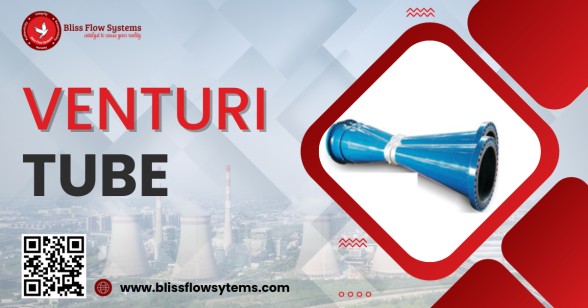


A Venturi tube is a short pipe with a narrow and restricted inner surface. It is typically used to calculate fluid flows and as a functional pump.
A Venturi tube is a short pipe with a narrow and restricted inner surface. It is typically used to calculate fluid flows and as a functional pump.
This principle states that within a specified flow field, a decrease in pressure occurs when there is an increase in velocity. The pressure difference described by the Venturi effect is utilized in many different devices. An apparatus known as a Venturi tube is the foundation for such device designs.
The Venturi effect is named after the Italian physicist Giovanni Venturi. The Venturi effect occurs when a fluid, such as a gas or a liquid, flows through a constricted section of a pipe or a tube. When a fluid passes through a narrow section of the pipe, its speed increases, while the pressure decreases. This happens because the fluid molecules must squeeze through a smaller space, causing them to speed up. According to the principle of conservation of energy, the total energy of the fluid must remain constant. So, as the fluid’s speed increases, its pressure decreases to compensate for the energy change.
This change in fluid velocity and pressure has practical applications. One notable example is the Venturi tube, a device that utilizes the Venturi effect to measure the flow rate of a fluid.
What are the main components of a Venturi tube and their functions?
Converging Part: As water flows through the cone, its surface area diminishes. As a result, the pressure drops and the speed of the water’s flow increases.
Throat Diameter: Because the area of a throat diameter is constant while water flows through it, the speed and pressure are likewise constant.
Diverging Part: As water passes through the cone, the area expands, causing the speed and pressure to drop.
Venturi tubes and Venturi nozzles can be supplied in a wide range of material grades. Machined devices can be manufactured from barstock, or forgings. Standard materials include ASTM A182 F316 & F304 Stainless Steels, ASTM A182 F11 & F22 Chromium Steels and ASTM A105 Carbon Steel Standard materials for fabricated devices are ASTM A240 316/L Stainless Steel and Carbon Steel.
For applications requiring high accuracy flow measurement, Venturi tubes can be individually calibrated, using water, air or natural gas, to obtain accurate discharge coefficients for the device over a range of Reynolds numbers. There are other testing methods include dyepenetrant inspection, hydrostatic pressure testing, radiographic inspection, magnetic particle inspection and positive material identification. ASME IX welding procedures and qualifications in common and exotic materials are also available. Various heat treatments, including NACE MR 0175, can also be provided.
As the venturi’s volumetric flow rate is constant throughout, the fluid’s linear velocity as it passes through the throat, which has a smaller diameter, must increase for the conserving energy, among the conservation equations, to result in a decrease in pressure.
A Venturi tube is a kind of differential pressure flow meter that calculates fluid flow by determining the pressure difference between two points in a pipe. Constricting the pipe’s diameter results in an increase in flow velocity and a corresponding pressure drop, which is what produces this pressure difference. The flow rate can be calculated using these variations in the fluid flow.
